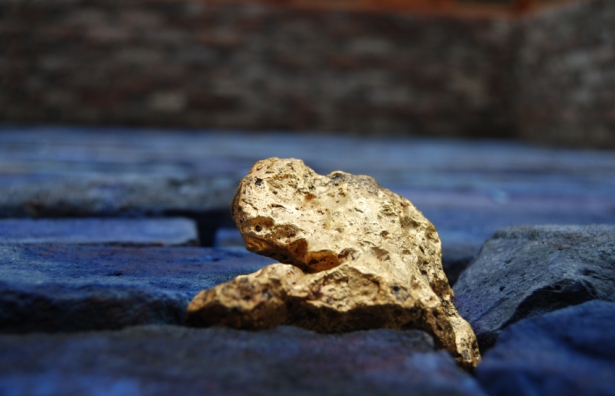This post comes from the Artists and Climate Change Blog
This week, the Jan Van Eyck Academy, a post-academic institute for art, design and reflection in the quaint town of Maastricht (Netherlands), opened a Lab for artists to do Nature Research. In addition to offering a range of (amazing) facilities that can support woodwork, (RISO) printmaking, photography, video, and metalwork, the institute now acknowledges that nature is not only a great inspiration for artists, but the lack of it is a growing concern for many. The Van Eyck is positioning itself on the frontline of international pioneering art institutions that are enabling artists to explore in depth, through their work, their relationship to nature. The playground for this new Lab is a studio, garden, and greenhouse. Named after Jac. P. Thijsse, a famous Maastricht ecologist, the Lab gives artists an opportunity to do active research (get their hands dirty) and to consider the subject of nature in relation to ecological and landscape development issues. It’s supposedly a place to build bridges – between humankind and nature, but also between art and other disciplines, including agriculture, biology, botany, and (landscape) architecture.
The Jac. P. Thijsse Lab launched during the Van Eycks annual Open Studios with two works, including one by artist Marcus Coates who will be a Van Eyck advisor this year. Outside in the gardens, people could hear birds enthusiastically singing, ready for spring. Inside the Lab studio, however, it was revealed that the cheerful chirping outside was human voices replicating bird songs. Coates’s Dawn Chorus (2007) features individuals sitting in their own habitats – a car, an office, a bedroom, a school staff room – singing bird songs. For this project, Coates recorded birdsong of individual birds and then digitally slowed down the songs by up to 20 times. Singers from amateur choirs were asked to mimic this slowed down sound, which is similar in tone to the human voice. The recording was then sped up to the original speed of the birdsong, creating a magical transformation of the human voice into that of a bird. The work shows us a new way to look at nature and highlights our interconnectedness. Solely by changing the speed of the sound, we end up speaking  the same language.
In the greenhouse, a mysterious installation by artists Fabio Roncato (Van Eyck participant of 2016/2017) and Ryts Monet was found. It consisted of original bricks from the greenhouse, infused with a bright blue Yves Klein-esque pigment that reminds us of chapel ceilings in small Italian towns. A galvanised meteorite seemed to have crashed on the floor among the blue bricks – an invitation from the artists to reflect on the topic of the unknown landscape and the outer space. Their work shows that a greenhouse in the context of the Van Eyck is not just a place to grow plants; it is really a laboratory for ideas, questions, experiments, and reflections on the landscape in the widest sense of the word.
The van Eyck is not the only art institution that has picked up on artists’ growing interest in growing. Other great European places that accommodate artists unafraid to get their hands dirty include Prinzessinengarten (Berlin, Germany), ZKU (Berlin, Germany), Pollinaria (Abruzzo region, Italy), Grizedale Arts (Lake District, UK) and AtelierNL (Noordoostpolder, Netherlands) amongst others. In the last few years, even upmarket commercial gallery Hauser and Wirth re-purposed an old farm and garden in rural Somerset (UK) into an artist residence, complete with restaurant and exhibition space (see photo at the top of the page).
We live in times that force us to formulate a response to a wide range of serious environmental challenges: mass extinction, loss of biodiversity, climate change. However, these crises aren’t just disasters. They’re also great opportunities to demand and help build new systems that serve people and planet more equitably than neo-liberalism has. Moving away from the old systems requires a new mentality, which includes a big re-think of our relationship to the natural world. Is nature solely a resource for us to enjoy and plunder? Or are we nature? We are stuck in the idea that the world revolves around humans. This is why, not so long ago, we refused to believe Galileo Galilei. We, humans, want to be at the epicenter of it all. The potential for non-human narratives has barely entered our consciousness.
Moreover, we have become so addicted to fossil fuels and raw materials that humankind is now a climatic and, some scientists argue, geological force. A new geological epoch called the Anthropocene – which marks the commencement of significant human impact on the Earth’s geology and ecosystems – has now replaced the Holocene. This shift comes with a responsibility to ourselves, nature, and other species, and with plenty of new questions to grapple with. If art spaces that provide time for nature research can help artists to engage with some of these questions, we might be moving towards interesting answers.
About Artists and Climate Change:
Artists and Climate Change is a blog that tracks artistic responses from all disciplines to the problem of climate change. It is both a study about what is being done, and a resource for anyone interested in the subject. Art has the power to reframe the conversation about our environmental crisis so it is inclusive, constructive, and conducive to action. Art can, and should, shape our values and behavior so we are better equipped to face the formidable challenge in front of us.





